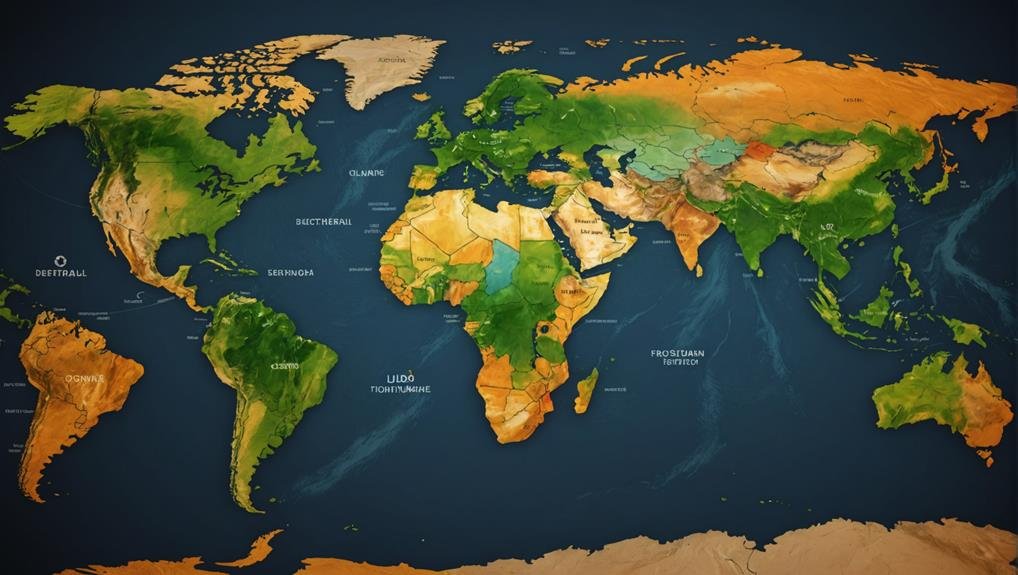Foreign Aid Unveiled: Insights, Trends, Impact
Foreign aid, a complex cooperation mechanism between nations, reveals crucial insights, evolving trends, and profound impacts on global aid strategies and socio-economic landscapes. It encompasses grants, loans, humanitarian aid, and military support, contributing to international relations and development efforts. Major donors like the U.S., Germany, and the UK play significant financial roles in aid provision. Technological advancements enhance aid delivery, monitoring, and accountability, ensuring transparency and effective resource utilization. Understanding historical contexts and current aid frameworks is essential to shape future aid strategies and address global challenges. The interplay of diverse forms of aid fosters impactful collaborations and positive change.
Key Takeaways
- Insights into foreign aid showcase its diverse forms and roles in global development.
- Trends reveal increased focus on humanitarian aid, health sector support, and global partnerships.
- Impact of foreign aid includes fostering sustainable development, addressing global challenges, and promoting stability.
- Technological advancements enhance aid delivery, monitoring, and accountability for more effective outcomes.
- Donor accountability ensures transparency, ethical resource use, and maximizes aid impact for positive change.
Forms and Definition of Foreign Aid
Foreign aid, characterized by voluntary assistance exchanged between nations, encompasses a diverse array of forms such as grants, loans, humanitarian aid, and military support, playing an important role in international relations and global development efforts. The role of technology in foreign aid has evolved greatly, enabling more efficient delivery of aid, monitoring of projects, and enhancing accountability.
Donor accountability is a key aspect of foreign aid, ensuring transparency, effectiveness, and ethical use of resources. Technology aids in tracking fund disbursements, project outcomes, and evaluating impact, thereby holding donors and recipients accountable. Embracing technological advancements can strengthen the impact and credibility of foreign aid initiatives, fostering sustainable development and building trust among stakeholders.
Types and Examples of Aid
Within the world of international assistance, aid comes in various forms and serves diverse purposes across nations worldwide. Foreign aid encompasses humanitarian assistance, development projects, and military aid. It can be provided through bilateral or multilateral channels, taking the shape of grants, loans, or technical support. Below is a table illustrating examples of different types of aid:
| Type | Examples |
|---|---|
| Humanitarian Aid | U.S. aid to Afghanistan for disaster relief |
| Development Projects | EU support for sustainable agriculture in Africa |
| Military Aid | Japan's assistance for peacekeeping operations |
These examples showcase the range of aid initiatives aimed at fostering global development and addressing pressing humanitarian needs.
Statistics and Trends in Aid
Drawing on the varied scope of aid initiatives highlighted in the previous examples, a thorough analysis of the statistics and trends in international assistance reveals significant patterns and insights.
Global partnerships play a pivotal role in shaping aid effectiveness, with OECD member countries contributing $161.2 billion in international aid in 2020. Major donors like the U.S., Germany, and the UK lead the way in providing essential financial support.
Importantly, there has been a substantial increase in humanitarian aid and health sector assistance, reflecting responses to pressing global challenges such as climate change and pandemics.
Understanding these statistics is essential for shaping future aid strategies and fostering impactful global collaborations to address complex socio-economic issues effectively.
Historical Context of Foreign Aid
Examining the historical evolution of international aid reveals pivotal moments that have shaped global assistance strategies and policies. Events like the American Revolution marked early instances of foreign aid, where countries supported each other in times of need.
However, it was the aftermath of World War II that truly revolutionized the landscape of assistance through initiatives like the Marshall Plan. This ambitious program aimed to rebuild war-torn Europe, demonstrating the power of foreign aid in fostering stability and development.
Subsequently, the Mutual Security Act of 1951 further solidified the commitment to foreign aid, laying the groundwork for modern aid practices. Understanding these historical contexts is essential in comprehending the roots of current aid frameworks and the enduring impact of early aid efforts.
Agencies and Aid Implementation
The essential implementation of foreign aid programs by specialized agencies such as USAID is vital for facilitating international development and addressing pressing global challenges. These agencies play a key role in ensuring that aid reaches its intended recipients efficiently and effectively.
By working in partnership with governments and other stakeholders, these agencies help to streamline aid delivery processes and maximize the impact of assistance programs. Government partnerships enable better coordination and alignment of aid efforts with national development priorities, fostering sustainable outcomes.
Through their expertise and resources, agencies like USAID contribute greatly to building capacity, promoting good governance, and fostering economic growth in recipient countries. Overall, their role in aid implementation is pivotal in driving positive change and addressing complex global issues.
Conclusion
To sum up, the intricate network of foreign aid encompasses a wide array of forms, types, and historical significance, shaping international relations and global welfare.
Through statistical trends and examples, the impact of aid efforts on promoting stability, development, and mutual prosperity becomes evident.
As we navigate the complexities of aid implementation by various agencies, it is evident that foreign aid plays a pivotal role in addressing global challenges and fostering cooperation on a worldwide scale.







